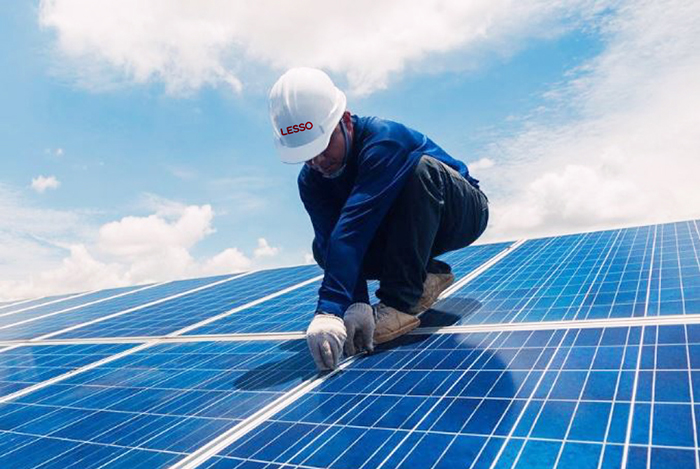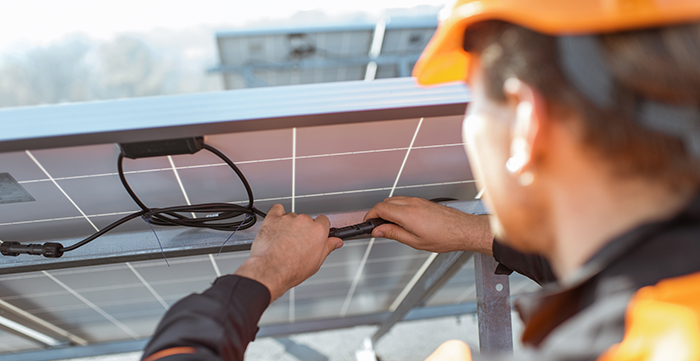With the global shift in energy structure and the rise in environmental awareness, commercial and industrial photovoltaic (PV) systems have garnered increasing attention from businesses and institutions as a key form of clean energy application. However, the construction process and acceptance standards for these systems remain relatively unfamiliar to many.
Construction Process of Commercial and Industrial Photovoltaic Systems
The construction process for commercial and industrial PV systems can be broadly divided into the following steps: project preparation, site survey and design, equipment procurement and transportation, construction and installation, system commissioning and grid connection, and post-installation maintenance.
1. Project Preparation
During the project preparation phase, businesses need to clearly define their energy needs, rooftop conditions, and investment budget. Initial consultations with professional PV system integrators are crucial to understand the basic principles of PV systems, expected returns, and policy support. The key at this stage is to ensure a fundamental understanding of PV systems and lay a solid foundation for subsequent work.
2. Site Survey and Design
The site survey is a critical part of the construction process. A professional technical team will conduct a detailed survey of the rooftop structure, orientation, shading conditions, and assess the roof's load-bearing capacity. Based on this, the design team will develop a customized PV system design plan, including the layout of PV modules, selection of inverters, and cabling routes. The completed design plan must be thoroughly communicated with the business to ensure it meets their actual needs.
3. Equipment Procurement and Transportation
In the equipment procurement phase, businesses and system integrators must jointly determine the brands and models of key equipment such as PV modules, inverters, and cables. Attention should be paid to the quality, performance, and price of the equipment, selecting suppliers with good reputations and after-sales service. Once procurement is complete, orderly transportation and storage according to the construction schedule are essential to ensure the equipment remains in good condition before installation.

4. Construction and Installation
Construction and installation are critical stages in building a PV system. Before construction, the site must be cleared of debris and potential hazards. Following the design plan, PV modules are installed, inverters connected, and cables laid. Throughout the construction process, businesses should appoint personnel to supervise and ensure the quality meets relevant standards. Construction workers must strictly adhere to safety protocols to guarantee a safe construction process.
5. System Commissioning and Grid Connection
After installation, the system must undergo commissioning. During commissioning, technicians will test and optimize the output power of PV modules, the conversion efficiency of inverters, and the overall system performance. Once stable operation is ensured, businesses need to apply to the local grid company for grid connection approval. Upon successful acceptance, the PV system will be officially connected to the grid, starting to supply power and benefiting from national subsidies.
6. Post-Installation Maintenance
Post-installation maintenance is equally important. Businesses should regularly clean and maintain PV modules to ensure optimal efficiency. Maintaining close contact with the system integrator to address any system faults or issues promptly is crucial. Professional maintenance services can extend the lifespan of the PV system and enhance overall system benefits.
Acceptance Standards for Commercial and Industrial Photovoltaic Systems
Acceptance of commercial and industrial PV systems is a crucial step to ensure system quality and performance. The acceptance process should comply with national and local standards, conducting a comprehensive inspection of various system aspects. Here are some main acceptance standards:
1. PV Module Acceptance
PV modules are the core components of a PV system, directly affecting the system’s efficiency. During acceptance, detailed checks of the modules' appearance, dimensions, power output, and conversion efficiency are necessary to ensure no damage or contamination and that they meet design specifications.
2. Inverter Acceptance
Inverters are key devices that convert direct current (DC) to alternating current (AC) in a PV system. Acceptance involves verifying the inverters’ models, specifications, and conversion efficiency. Additionally, the protection functions, communication capabilities, and stability of the inverters must be tested to ensure normal operation and system compatibility.

3. Cable and Wiring Acceptance
Cables and wiring are vital for power transmission in a PV system. Acceptance requires checking the specifications, models, and quality of the cables to ensure they meet design requirements and have good insulation properties. The connections, fastening, and waterproofing of terminals must also be tested for reliability.
4. System Performance Acceptance
System performance acceptance is essential to verify overall system functionality. Testing the system’s output power, efficiency, and grid connection performance is necessary. By comparing design values with actual values, the system's performance can be evaluated against expected targets. Additionally, comprehensive checks of protection functions, stability, and safety are required to ensure long-term stable operation.
5. Safety and Protection Acceptance
Safety and protection are critical aspects of PV system acceptance. Inspections of lightning protection, grounding, and fire prevention measures are necessary to ensure the system has a complete safety protection framework against external environmental disruptions. Additionally, verification of system labels, warnings, and emergency handling procedures is needed to ensure safe operation and maintenance by personnel.
6. Documentation and Materials Acceptance
Documentation and materials form the basis of PV system acceptance. Verification of design documents, construction drawings, equipment lists, and operation manuals is essential to ensure completeness and accuracy, providing strong support for subsequent maintenance work. Clarification of warranty periods, after-sales services, and technical support is also necessary to ensure businesses receive timely and effective support during use.
Challenges and Solutions in Construction and Acceptance of Commercial and Industrial Photovoltaic Systems
Despite the relative maturity of construction and acceptance processes for commercial and industrial PV systems, businesses may still face several challenges. Here are some common challenges and corresponding solutions:
1. Rooftop Condition Constraints
Some commercial and industrial buildings may have suboptimal rooftop conditions, such as limited load-bearing capacity or significant shading. To address these issues, businesses can conduct thorough surveys and evaluations during the design phase, selecting suitable PV modules and installation methods. For example, lightweight PV modules, optimized module layouts, and tracking mounts can mitigate rooftop constraints.
2. Construction Safety and Quality Control
The construction of commercial and industrial PV systems involves high-altitude and electrical work, posing safety risks. Ensuring construction safety and quality control is also challenging. To guarantee safety and quality, businesses should choose experienced professional construction teams, strictly adhering to safety protocols and construction standards. Supervisors should be appointed during construction, and regular training and education should be provided to enhance workers' safety awareness and construction skills.
3. Complicated Grid Connection Process
The grid connection process for commercial and industrial PV systems is relatively complex, requiring multiple communications and coordination with local grid companies. To simplify the grid connection process, businesses can familiarize themselves with local grid policies and procedures in advance, preparing the necessary application materials and documents. Maintaining close communication with grid companies can help promptly resolve issues and difficulties during grid connection.
4. Insufficient Post-Installation Maintenance Services
After PV system construction, some businesses may face inadequate post-installation maintenance services. To ensure long-term stable operation, businesses should select system integrators with good reputations and after-sales services, signing long-term maintenance contracts. Professional maintenance services can promptly identify and address system faults and issues, extending the system's lifespan and enhancing overall system benefits.
Conclusion
The construction and acceptance of commercial and industrial PV systems is a complex and meticulous process, requiring collaborative efforts and coordination from businesses, system integrators, and grid companies. By following scientific construction processes and stringent acceptance standards, the quality and performance of PV systems can be ensured to meet expected targets, providing long-term economic and environmental benefits for businesses.







